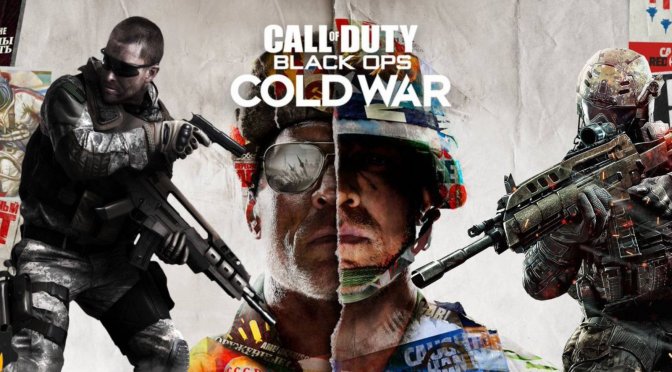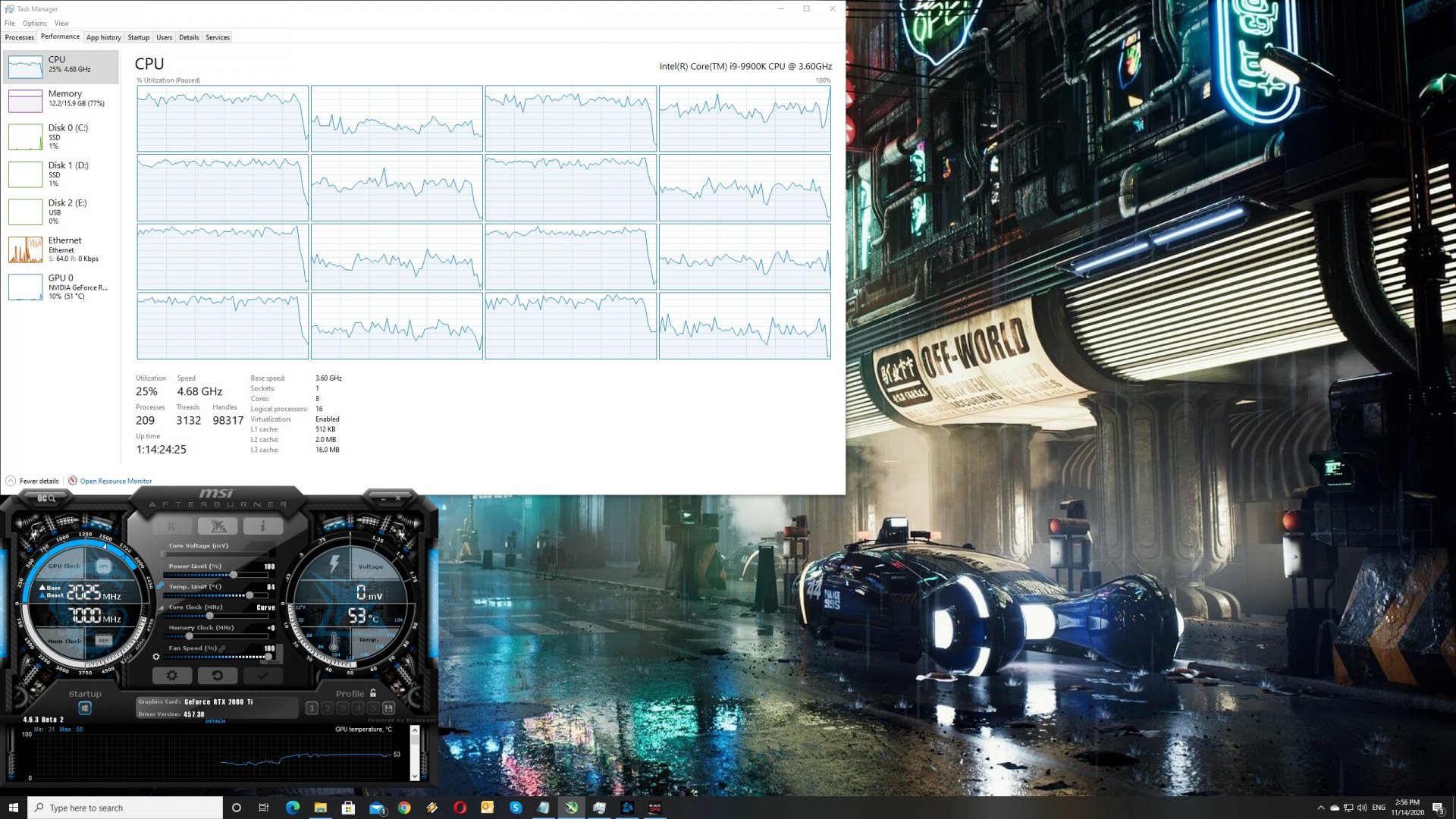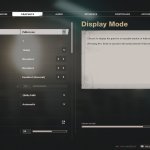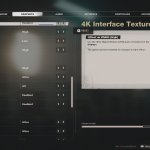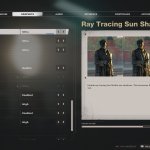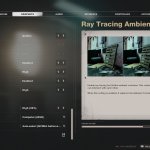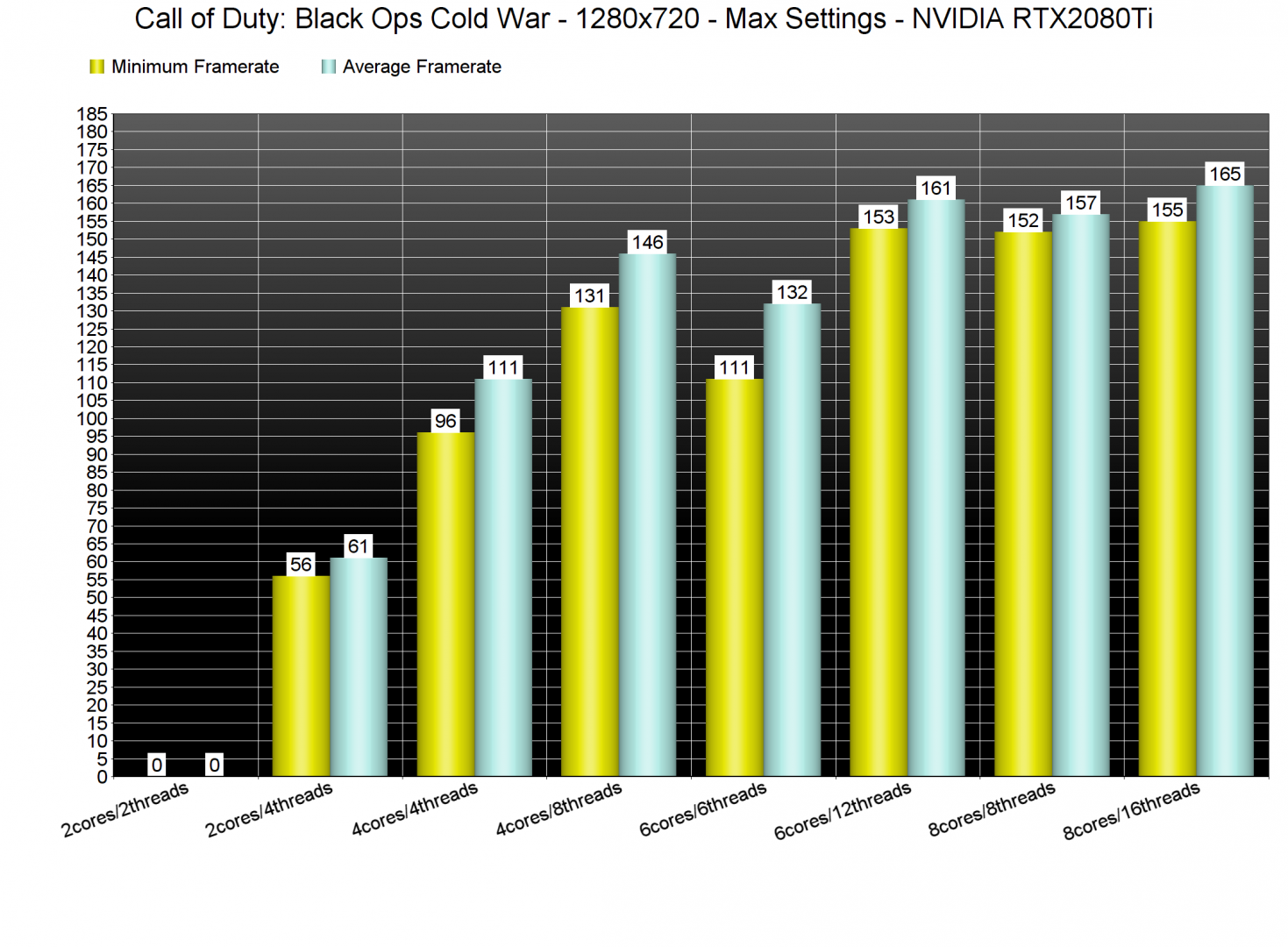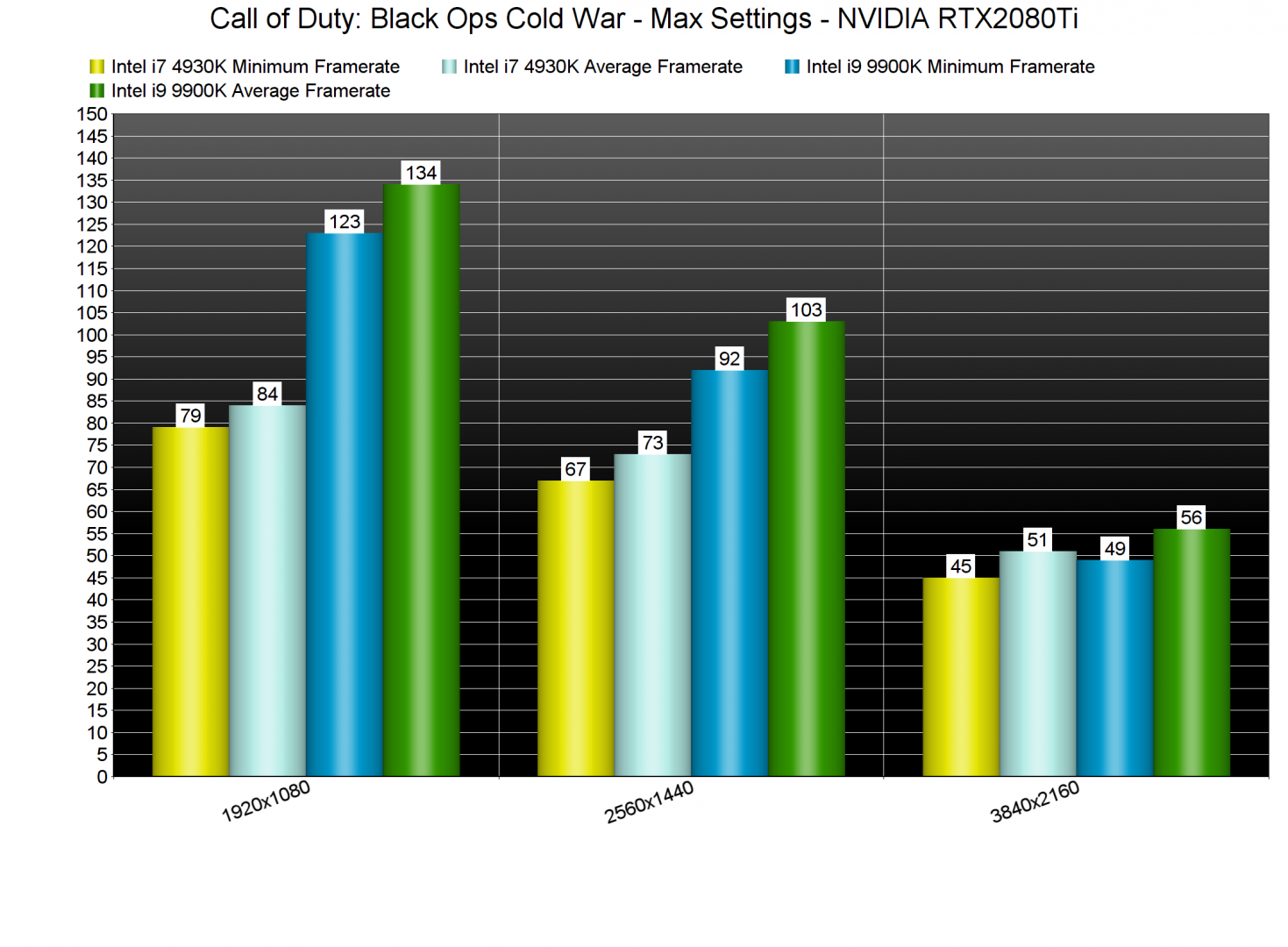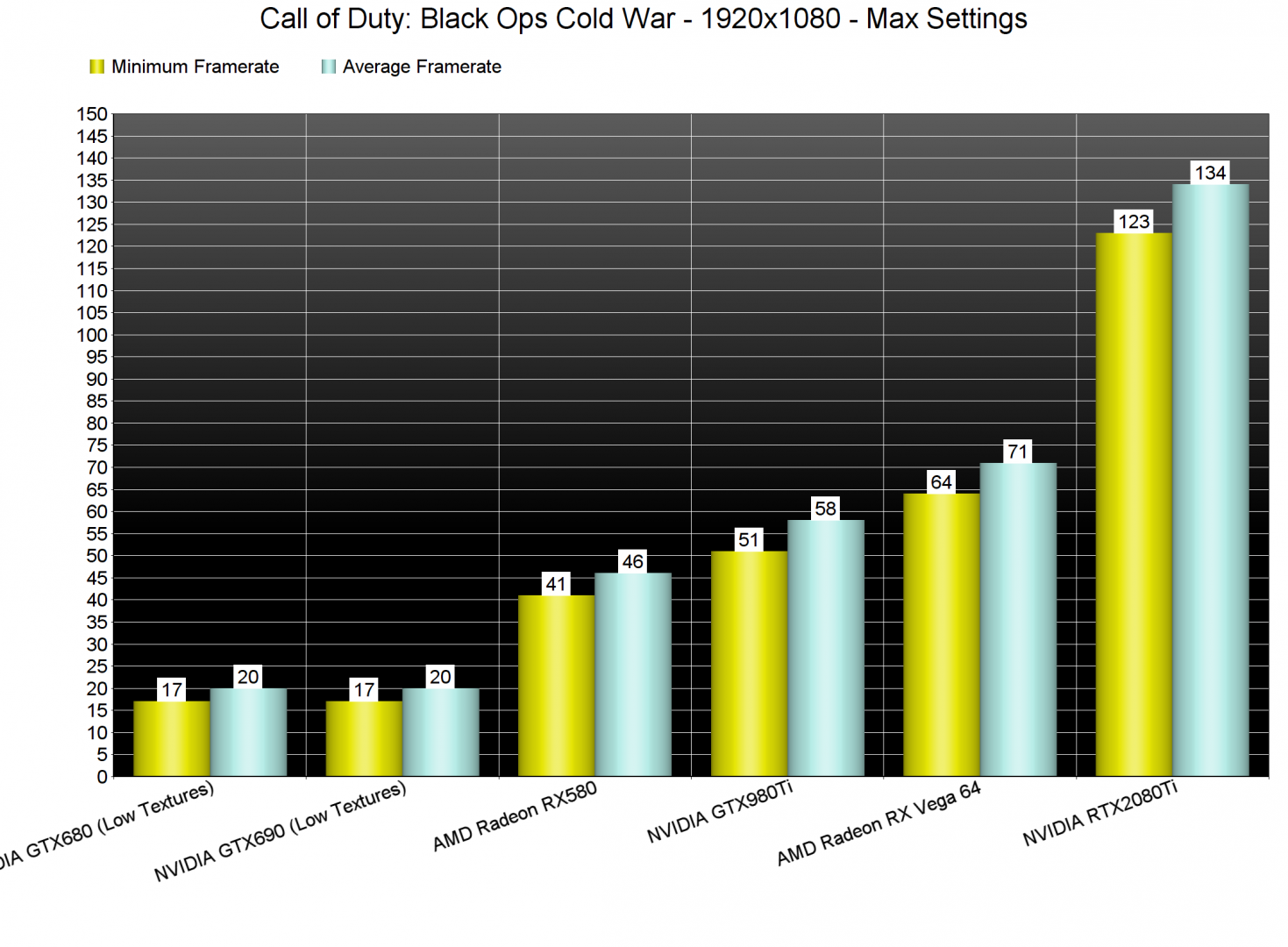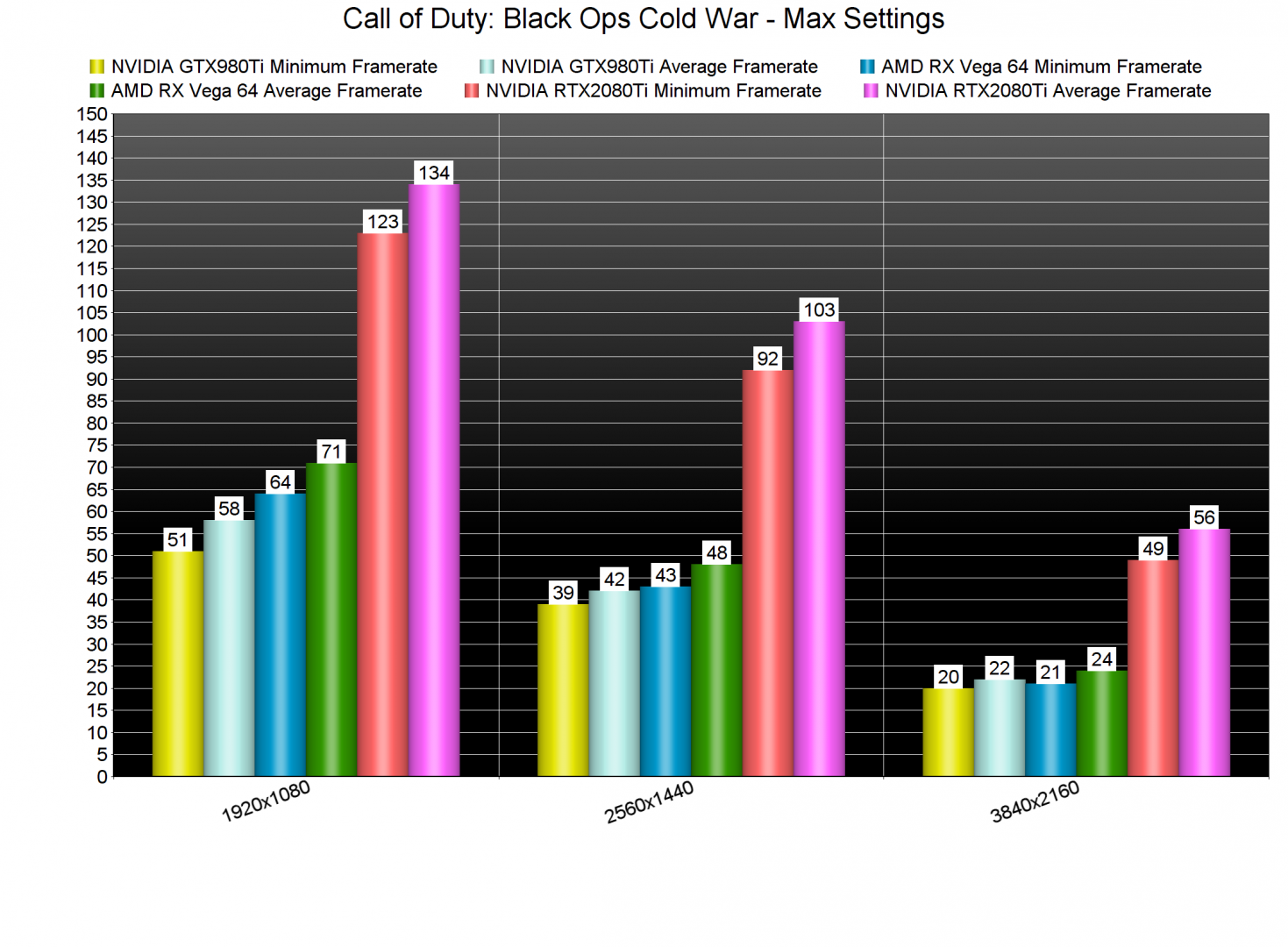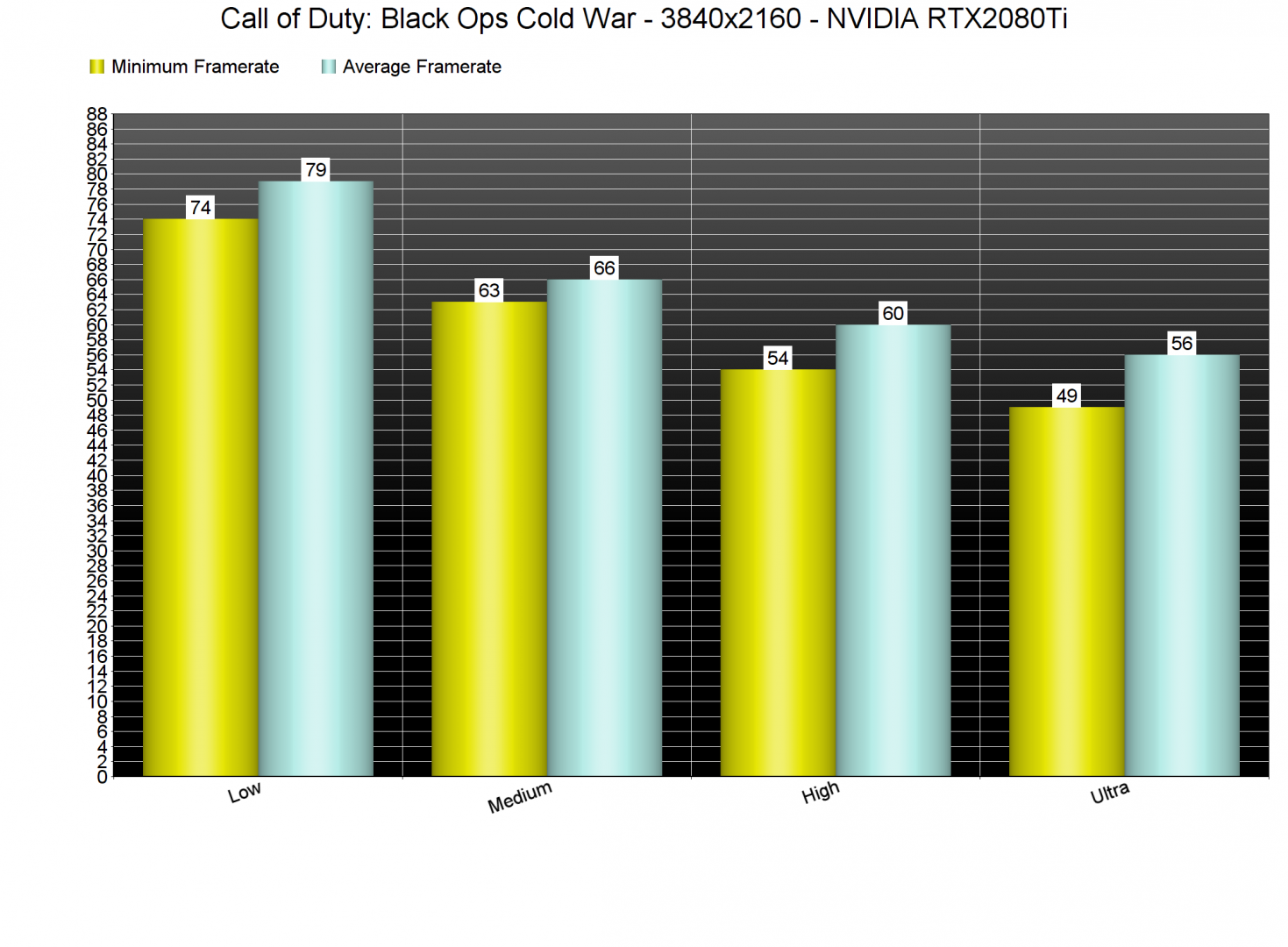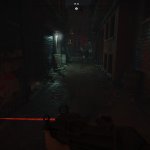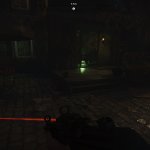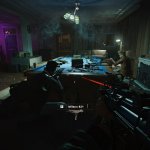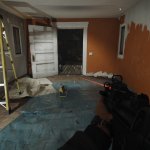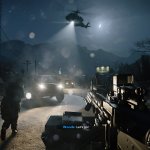Activision has just released Call of Duty Black Ops Cold War on the PC. Powered by an upgraded version of the Black Ops III engine (with some tools from the IW 8.0 engine), it’s time to benchmark it and see how it performs on the PC platform.
For this PC Performance Analysis, we used an Intel i9 9900K with 16GB of DDR4 at 3600Mhz, AMD’s Radeon RX580 and RX Vega 64, NVIDIA’s RTX 2080Ti, GTX980Ti and GTX690. We also used Windows 10 64-bit, the GeForce driver 457.30 and the Radeon Software Adrenalin 2020 Edition 20.11.1 drivers. NVIDIA has not added any SLI profile for this game, meaning that our GTX690 behaved similarly to a single GTX680.
As with most Call of Duty games, Beenox is handling the PC version. The team has worked with NVIDIA and implemented support for both Ray Tracing and DLSS 2.0. In this article, though, we’ll be focusing on the non-RT version of the game.
Beenox has implemented a respectable number of graphics settings. PC gamers can adjust the quality of Textures, Models, Special Effects, Screen Space Reflections, Object View Distance, Volumetric Lights, Shadows and more. There are also options to enable/disable Subsurface Scattering, Motion Blur, Special Effect Shadows and Weapon Shadows. The game also supports uncapped framerates, and comes with a FOV slider.
Call of Duty Black Ops Cold War does not come with a built-in benchmark tool. As such, we’ve decided to benchmark the “Fracture Jaw” mission. This particular mission appeared to be more demanding than the previous ones. Moreover, we lowered our resolution to 1280×720 for our CPU benchmarks (so that we could avoid any GPU bottleneck).
In order to find out how the game scales on multiple CPU threads, we simulated a dual-core, a quad-core and a hexa-core CPU. And, as we can see, PC gamers will at least need a quad-core CPU. While our simulated dual-core was able to provide an average of 61fps, it was dipping below 60fps at times. Furthermore, the game can take full advantage of even octa-core CPUs. As we can clearly see, there is a noticeable performance difference between a CPU with six cores/threads and one with eight cores/threads.
Our older-generation Intel i7 4930K was also able to provide a constant 60fps experience at both 1080p and 1440p on Max settings. However, this CPU was significantly limiting the game’s performance at 1080p. For some unknown reason, the Intel i7 4930K was also under-performing at 1440p.
Now while Call of Duty: Black Ops Cold War can run smoothly on a respectable range of CPUs, it requires a high-end GPU. The only GPUs that were able to provide a 60fps experience at 1080p/Max settings were the AMD Radeon RX Vega 64 and the RTX2080Ti. Surprisingly enough, and even though this is an NVIDIA-sponsored game, AMD’s GPUs perform great in this.
At 1440p/Max settings, the RTX2080Ti was the only GPU capable of providing a smooth gaming experience. At that resolution, the Vega 64 was still faster than the GTX980Ti. When we raised our resolution to 4K, though, both of these GPUs performed poorly. The NVIDIA RTX2080Ti was also unable to come close to a 60fps experience. The only way owners of an RTX2080Ti or RTX3070 can get 4K/60fps on Max settings is by using DLSS 2.0.
Even though Call of Duty Black Ops Cold War offers numerous graphics settings, it does not scale that well. For instance, the performance difference between Max and High settings is only 6fps (which translates to a 7% performance difference). Similarly, the difference between Low and Max settings is 24fps. Therefore, owners of older GPUs may have trouble running the game with 60fps. Do also note that Black Ops Cold War does not offer any graphics presets, so we had to manually set these settings.
Graphics-wise, Call of Duty: Black Ops Cold War sports amazing graphics. The game features highly detailed character models, and packs numerous modern-day graphical effects. Most objects cast dynamic shadows, and there are some cool scripted events. The game also packs great explosions, something most of us would expect from a COD game. Our only gripe with Black Ops Cold War is the horrendous pop-in issues that occur, even on Max settings. This is something that was also present in Modern Warfare Remake, and was never addressed. These pop-in issues become especially annoying in the helicopter missions. We should also note that there are some really low-resolution textures, even when using the HD Texture Pack.
All in all, Call of Duty Black Ops Cold War can run on a wide range of CPUs, but requires a high-end GPU. Thankfully, the game’s visuals justify these high GPU requirements. So yeah, Black Ops Cold War at least looks great on the PC. Unfortunately, though, owners of weaker GPUs may have trouble running it with constant 60fps, even at 1080p. Lowering the game’s graphics settings to High and Medium only brings a 7% and 17% performance increase, respectively. Thankfully, RTX owners can further increase performance by enabling DLSS 2.0. And let’s not forget that you can also enable some cool Ray Tracing Ambient Occlusion/Shadows effects.
Enjoy!

John is the founder and Editor in Chief at DSOGaming. He is a PC gaming fan and highly supports the modding and indie communities. Before creating DSOGaming, John worked on numerous gaming websites. While he is a die-hard PC gamer, his gaming roots can be found on consoles. John loved – and still does – the 16-bit consoles, and considers SNES to be one of the best consoles. Still, the PC platform won him over consoles. That was mainly due to 3DFX and its iconic dedicated 3D accelerator graphics card, Voodoo 2. John has also written a higher degree thesis on the “The Evolution of PC graphics cards.”
Contact: Email

